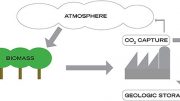 On a steely November morning, Dorn Cox tours me around the dairy farm where he works in Freeport, Maine. The hummocky coastal landscape has begun to brown for the winter, and the scraggly pastures feel lifeless as we shiver in freezing rain. But Cox, research director at the 600-acre Wolfe’s Neck Center for Agriculture and the Environment, paints a far brighter portrait of these dreary fields. He describes networks of fungi bustling with activity beneath the wilting grass — feeding on sugars at tips of roots, sponging up rainwater and extending tendrils that nourish the pasture with nutrients. To him, this ground is a subsurface garden teeming with life. “Soil is not built, it’s grown,” he says.
On a steely November morning, Dorn Cox tours me around the dairy farm where he works in Freeport, Maine. The hummocky coastal landscape has begun to brown for the winter, and the scraggly pastures feel lifeless as we shiver in freezing rain. But Cox, research director at the 600-acre Wolfe’s Neck Center for Agriculture and the Environment, paints a far brighter portrait of these dreary fields. He describes networks of fungi bustling with activity beneath the wilting grass — feeding on sugars at tips of roots, sponging up rainwater and extending tendrils that nourish the pasture with nutrients. To him, this ground is a subsurface garden teeming with life. “Soil is not built, it’s grown,” he says.
The key ingredient fueling all this life: carbon. Plants generate it through photosynthesis and trade it with soil microbes in exchange for nutrients. It’s a virtuous cycle — the more carbon that plants send toward the soil, the more plentiful microbes become, and the healthier the plants grow. And because carbon locked up in soils is carbon not floating in our atmosphere, carbon-rich soils make for a healthier climate, too, Cox says. “It’s very difficult to improve soil health and not have a climate benefit.” Lush soils appeal not just to farmers but, increasingly, to policymakers and entrepreneurs scrambling to slow climate change, with mounting pressure from the 2015 Paris Climate Agreement that calls on nations to keep global warming from reaching 2 degrees Celsius above pre-industrial levels this century. (The United States has taken steps to withdraw from the agreement, but nearly 200 other nations remain committed.)
A growing body of research from the Intergovernmental Panel on Climate Change recognizes sustainable agriculture as key to slowing warming. So scientists like Cox are probing and tweaking farm practices to optimize soil health, and a soil-centric carbon marketplace has begun to emerge offering farmers financial incentives to adopt these practices. Now, as technologies allow farmers to share more data and monitor their soils more readily than ever, new tools are available to further cultivate this multipronged solution sitting right beneath their feet. To harness this momentum, Cox and colleagues have launched an ambitious project to pool all these new data into a single online platform and encourage researchers and farmers to share strategies on how best to keep carbon underground. Called OpenTEAM — Open Technology Ecosystem for Agricultural Management — the project aims to woo farmers to change their practices in relatively minor ways that could eventually have major impacts on their bottom line, and the environment. So far, the team consists of about 20 regional “hub farms” around the country including research farms, production farms and combinations of the two like the Wolfe’s Neck Center, which sells all its milk to the organic yogurt and dairy company Stonyfield. These hub farms will host field trials of the OpenTEAM software during the 2020 growing season to help iron out kinks and get other farmers on board and comfortable with the system.
“It’s exactly the sort of collaborative platform that’s needed,” says Peter Smith, a soil scientist at the University of Aberdeen in Scotland. Soil carbon storage, he says, is a no-brainer tactic in mitigating climate change, though it is limited in how far it can take us: At their best, global soils can store just 2 to 5 of the roughly 37 gigatons of carbon dioxide emitted into the atmosphere each year. And, over time, they can become saturated and stop absorbing more. But given all the ways that soil carbon boosts farm productivity, there’s no reason not to include it in the suite of tools used to meet the Paris Agreement, Smith says. “Just about everything it does is beneficial.”
Shoots to soils
Carbon worms its way into soil through several pathways that research has recently helped clarify. It turns out that living plants play a much larger role in sending carbon underground than scientists had once thought, says Steven Banwart, a soil scientist at the University of Leeds and author of a report on soil ecology in the 2019 Annual Review of Earth and Planetary Sciences. Farmers have perceived dead plant material as a key source of soil carbon (plants are roughly 45 percent carbon), and mulches and composts as the means to get it into farm fields. But this is just a fraction of the story, Banwart says. “Plants are actually pushing carbon, minute by minute as they are photosynthesizing, out into the soil.”
Up to a third of the sugars plants create during photosynthesis goes not to leaf and stem growth, but to growth of fungi that rapidly spread out of plant roots and into the soil — sometimes expanding by up to a centimeter per day. In return, the fungi offer up nutrients like nitrogen and phosphorus that plants can’t make on their own. Biologists have known about this symbiosis for years, but new technology allows scientists to quantify it and watch it unfold. In the lab, researchers can expose plants to carbon-14 — a radioactive carbon isotope — and use imagery to track the isotope as it travels from the air, into leaves and down through roots within hours. “You’ll suddenly find, within a day, bright spots on that image out at the tips of these fungi,” Banwart says.
These images show that carbon storage calls for more than just compost — it requires an ongoing boost to those underground alliances. But many conventional farming practices hurt rather than help those relationships, Cox says. The heavy steel plows that churn up topsoil during tillage, for example, rip fragile fungal threads that facilitate symbiosis. Low-till or no-till methods keep those threads intact by more delicately managing fields. But low-till methods take more time and effort than quick-tilling rides through fields on a tractor, and this can push farmers away from these practices. That’s especially since the capacity of soils to hold carbon — and thus crop yield and overall farm health — have largely been anecdotal, Cox says. He hopes that the data-driven evidence compiled through OpenTEAM will help persuade more farmers to adopt soil-friendly practices. Cox describes OpenTEAM as an “ecosystem” of soil maps, satellite imagery, app software and other soil analysis technologies that have existed scattered around the Internet but have never been pulled together on a single platform. In many cases, they have been hard to find or difficult to use. Cox hopes pooling these tools will make them collectively stronger and more user-friendly for farmers.
A Yale-based group called Quick Carbon, for example, is designing an app to help farmers estimate soil carbon out in fields based on reflectivity (darker soils tend to contain more carbon) using a handheld tool called a reflectometer. It would offer a less cumbersome and less expensive alternative to lab-testing soil samples. But to strengthen those field estimates, Quick Carbon needs ample, well-tested data to calibrate measurements, and OpenTEAM members could help compile them. Cox and colleagues are now working to ease the flow of such data so that the information can travel seamlessly from one online platform to the next, with a goal of completing the preliminary setup this year.
Brewing the incentive
Pooling tools and data like this is “a terrific idea,” says Lini Wollenberg, a natural resource management specialist with CGIAR, a global research consortium, and the University of Vermont. But for the information to really make a change, farmers will need to stick with the methods. Carbon is constantly in flux, and soil accumulations can quickly travel back into the atmosphere as environmental conditions change or as farming practices shift. A farmer practicing no-till methods over several seasons, for example, can fast undo progress by resorting back to tillage. One way to encourage farmers to stick with carbon-friendly practices is to provide an immediate financial incentive. That’s what the Seattle-based startup Nori is doing, by building a marketplace that rewards farmers for storing carbon in their fields. (Nori is a partner of OpenTEAM, along with more than a dozen other companies, nonprofits and research groups tackling soil health from different angles.)
Through Nori, farmers commit to adopting a suite of sustainable practices — such as low-till methods or cover cropping to keep carbon-friendly root masses intact year-round. At their best, these practices can increase carbon storage by up to about 1.5 metric tons of carbon dioxide per acre per year, Nori estimates, and farmers can sell what are called Nori Carbon Removal Tonnes (NRTs) to individuals or corporations interested in taking climate action. Once farmers have chosen their methods, Nori connects them with an accredited third-party verifier who estimates how much carbon their practices will store over a 10-year period.
“No one is being forced to pay for carbon removal, but they see its value,” says Christophe Jospe, Nori cofounder and chief development officer. Corporations, for example, may experience pressure from their shareholders to reach certain sustainability goals, or they may recognize marketing potential in taking this voluntary step. The first pilot project was launched last year at Harborview Farms, a 13,000-acre operation in Maryland that grows soybeans, corn and wheat, and several other pilots are in the works to demonstrate the supply and demand within the market. For now, the NRTs are listed at $15, though farmers will ultimately be able to choose rates based on supply and demand, similar to sale at a grain elevator. “The farmer is generating a digital crop that they can take to the elevator based on the market price,” Jospe says.
As Cox and I walk along the muddy road through sleet, he mentions that food companies are increasingly wising up to benefits of sourcing from climate-conscious farms. Stonyfield, Wolfe’s Neck’s primary client, was a founding member of OpenTEAM. And General Mills also has jumped on board in hopes of encouraging its supply farms to adopt more sustainable practices and so help the company meet its own climate goals.
Passing a dairy barn on our right, Cox adds that these companies haven’t before had a good way of quantifying how close they were to meeting their goals. He hopes OpenTEAM will change that — and, in the end, that the project cultivates not just a thriving techno-ecosystem, but actual ecosystems, right on farms. “We are creating habitat,” he says.
Laura Poppick
Originally published
by Knowablemagazine.org
March 11, 2020





